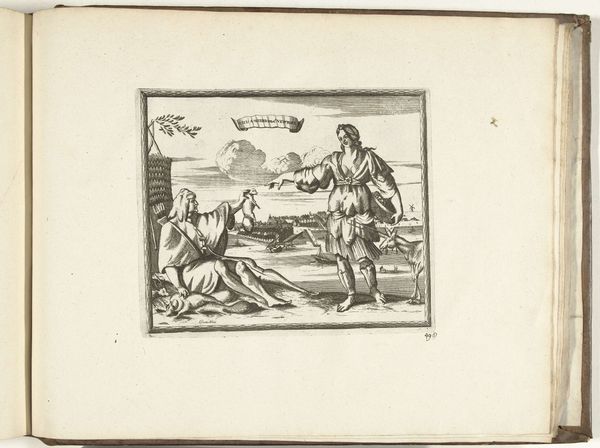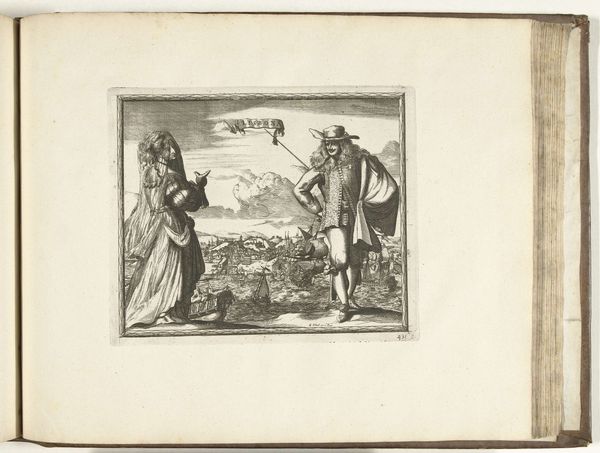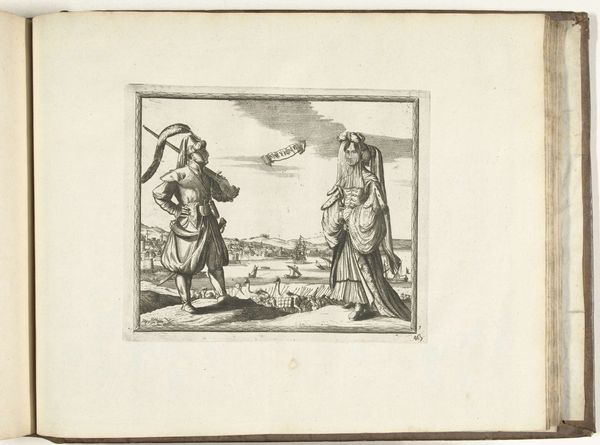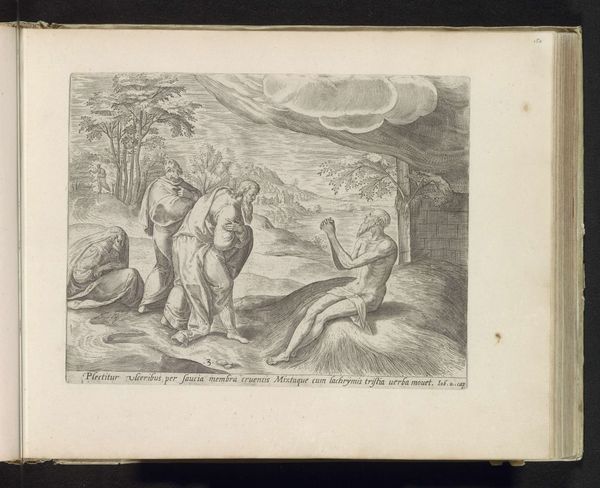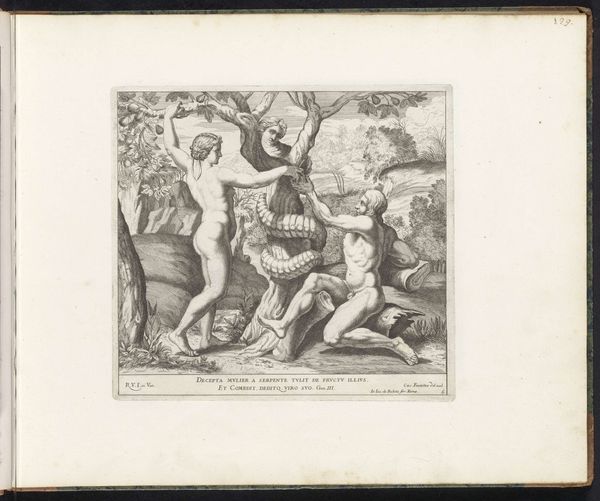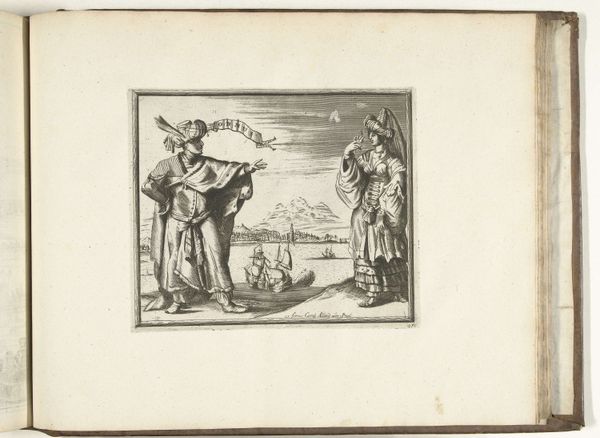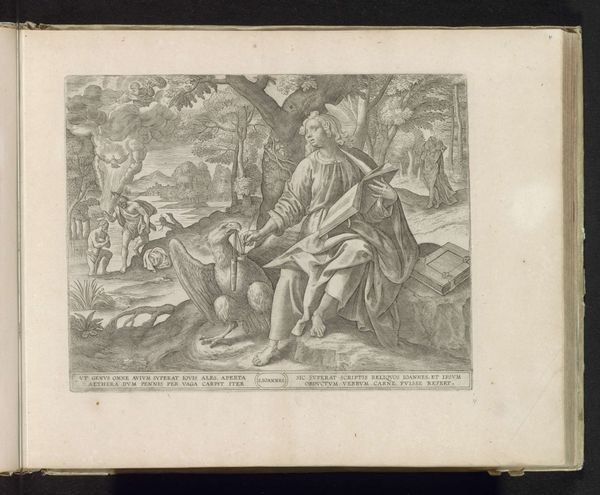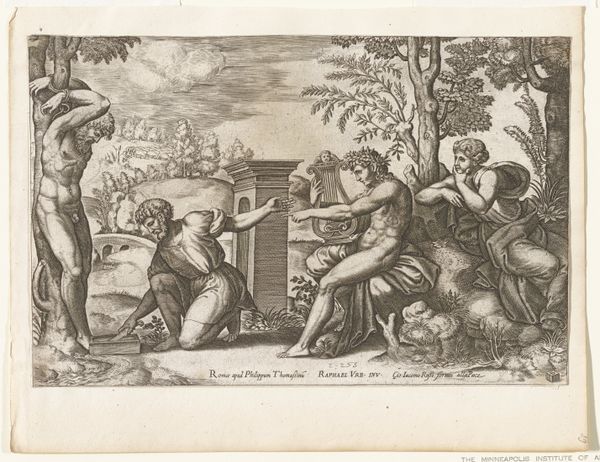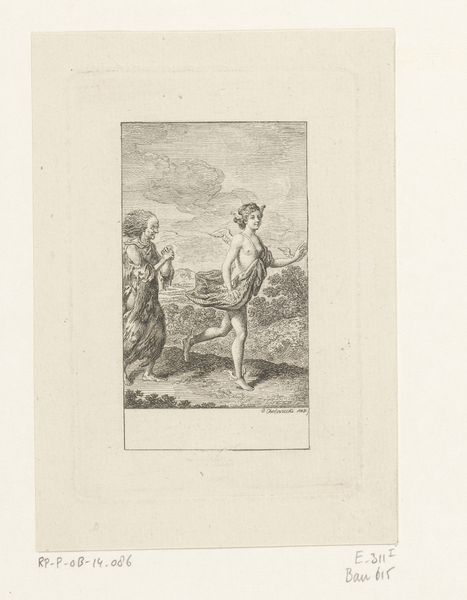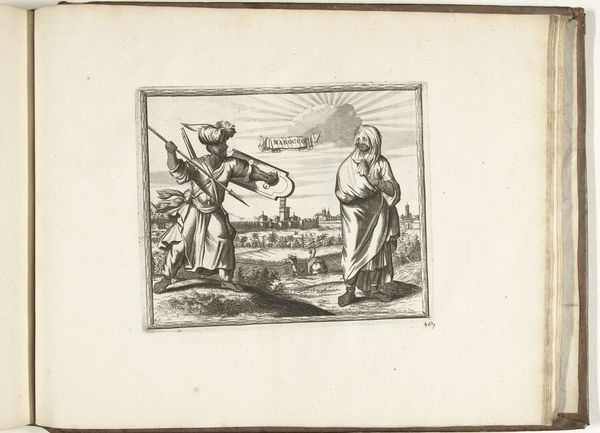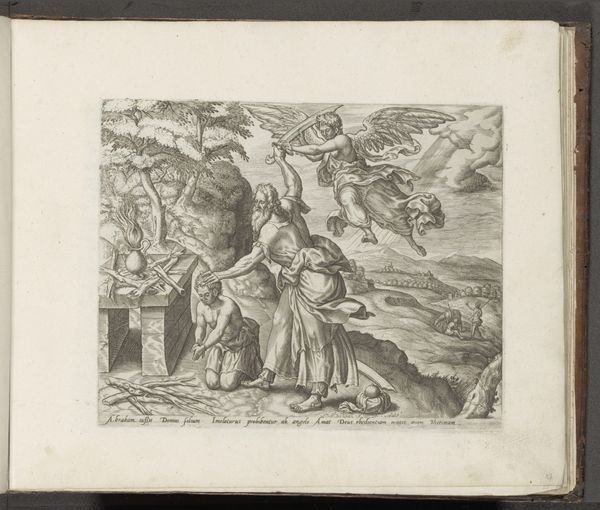
print, engraving
#
portrait
#
narrative-art
# print
#
ancient-mediterranean
#
genre-painting
#
engraving
Dimensions: height 180 mm, width 215 mm
Copyright: Rijks Museum: Open Domain
Editor: So this print, “Inwoners van Kaap de Goede Hoop, 1726,” by Carel Allard, gives us a glimpse into life in Cape Town during that era. It's an engraving. The figures are quite striking, but something feels...posed about them. What sense do you make of this artwork? Curator: It's crucial to remember the context of this print: 1726. This isn't a neutral depiction of local inhabitants. It’s European, likely intended for a European audience. Notice the ships in the background, and the stylized volcano – what story do you think the artist is trying to tell through this imagery? Editor: Possibly something about the Dutch presence there? I see how they are placed together, almost like a theatre scene, and maybe not how things really were. Curator: Precisely. These "genre paintings" often reinforced existing power structures. The artist is using stereotypes, perhaps unintentionally. The way they render skin tones, clothing or the lack thereof, and landscape, all communicate ideas about "otherness." Consider the politics of displaying images of colonized peoples. Does this artwork function to give real insight, or does it support European perceptions of difference? Editor: I hadn't really thought of it in terms of its potential use in legitimizing a political power or presence. Looking at it through that lens now is rather revealing, actually. Thanks! Curator: My pleasure. Remember, images aren't simply records. They actively participate in constructing historical narratives, and thus, play an active social role. And that's important.
Comments
No comments
Be the first to comment and join the conversation on the ultimate creative platform.
